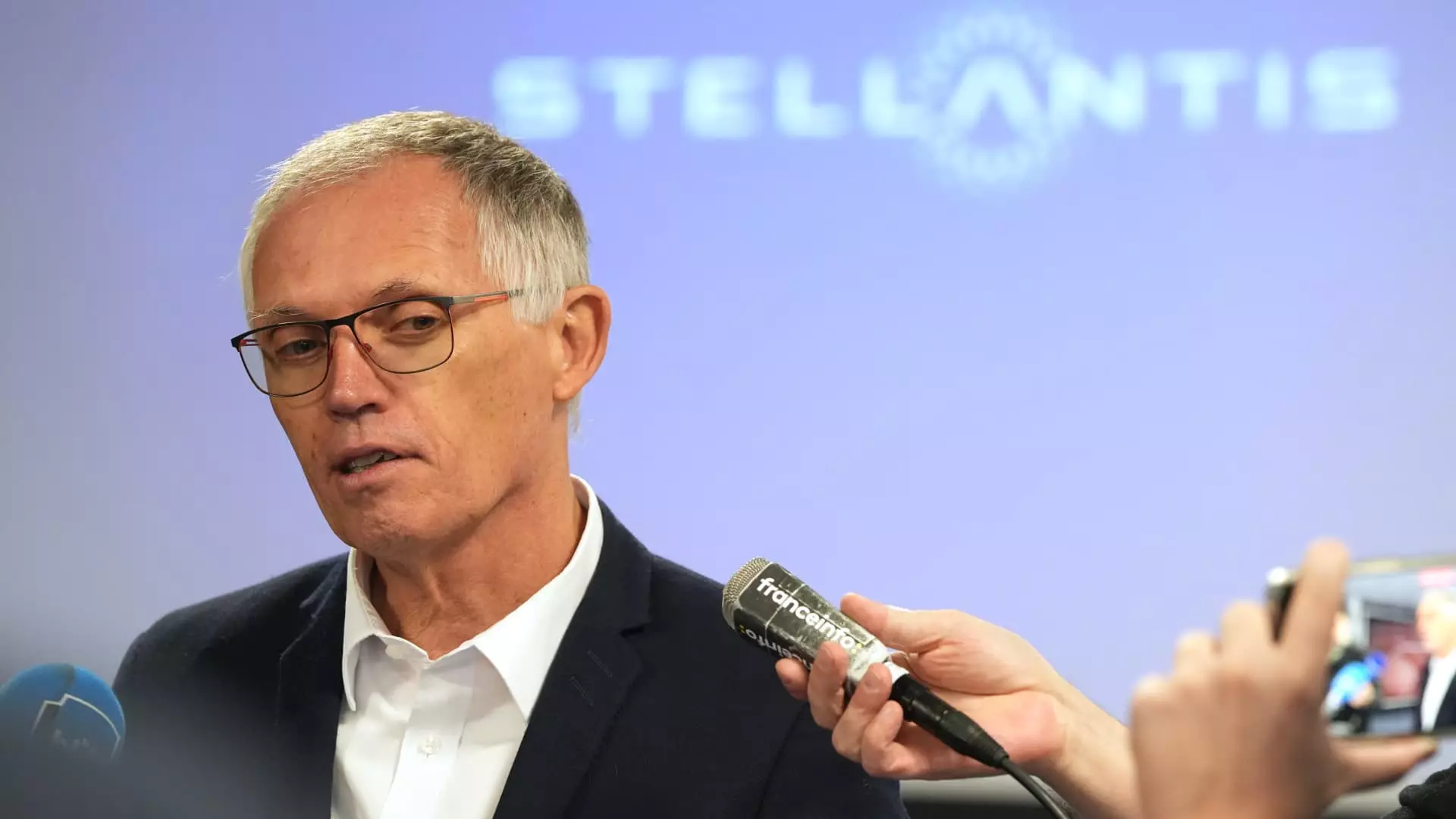The unexpected resignation of Carlos Tavares as the CEO of Stellantis marks a significant turning point for the automotive giant, reflective of deeper issues within the organization. Announced on a Sunday, the resignation has been attributed to diverging perspectives between Tavares and the board of directors. Mired in a series of underwhelming financial results and internal strife, Stellantis finds itself at a crossroads, guiding one of the world’s largest automotive manufacturers into an uncertain future.
In what can only be described as a tumultuous shift, the Stellantis board accepted Tavares’ resignation effective immediately. The decision underscores the growing rift that escalated over recent weeks. Henri de Castries, the senior independent director, indicated that these discordant views led to the necessary yet stark decision to part ways with Tavares. The board has stated that it aims to find a replacement for Tavares within the first half of the coming year. Until then, John Elkann, the company chairman, will oversee operations through an interim executive committee.
This response to leadership discord is not merely a procedural formality; it reflects how the alignment of visions can be the heartbeat of corporate success. Tavares’ strategic direction lost traction as financial performance plummeted, reflecting the weight of mismanagement and a failure to innovate in a rapidly evolving automotive landscape.
Tavares’ tenure at Stellantis began with a remarkable backdrop — the merger of Fiat Chrysler Automobiles and PSA Group in 2021. His previous leadership at PSA Group positioned him as a prominent figure in the automotive sector. However, despite his initial successes, the last fiscal year has painted a drastically different picture. The company’s financial results have not only underperformed expectations but have also showcased alarming declines, particularly within the U.S. market, a critical revenue source.
Compounding this situation, Stellantis reported a striking 27% decrease in third-quarter net revenues and a drop in sales, with a notable 20% decline in global vehicle sales reported last quarter. Such metrics are not just numbers; they signify a disconnect with consumers and a concerning trend in competitiveness within the automotive sector. This decline occurred despite Tavares’ proactive attempts to amend what he deemed “arrogant” oversights in market strategies.
Tavares made aggressive cost-cutting measures a cornerstone of his strategy, aiming to achieve a self-reported €8.4 billion ($9 billion) savings from the merger. This involved a comprehensive reshaping of Stellantis’ supply chain and slashing headcounts by 15.5%, which translates to approximately 47,500 employees since December 2019. Such drastic measures may appease short-term financial constraints but can create long-term complications.
Several insiders have noted that these cuts feel excessive, leading to operational inefficiencies particularly in the lucrative U.S. market. Union voices, notably the United Auto Workers, have voiced deep concerns over layoffs and production cutbacks, calling for Tavares’ removal for several months. The unrest among both union members and the dealership network signals a broader discontent with Tavares’ leadership style and priorities.
Furthermore, the disconnect with dealerships, compounded by high inventory levels and insufficient support, amplifies a narrative of an executive team out of sync with the industry realities. Stellantis, despite housing established brands like Dodge and Chrysler, appears to struggle with fostering a supportive environment essential for sustaining dealer satisfaction and customer loyalty.
With Tavares’ departure, Stellantis is poised for a leadership transition during a critical period. The board’s commitment to establishing a new CEO within months suggests an urgency to re-align the company’s vision and strategies. The next leader will inherit not only the legacy of Tavares’ ambitious but ultimately faltering vision but also a significant set of challenges including improving financial performance and restoring confidence among stakeholders.
As the automotive industry grapples with challenges like electrification and evolving consumer preferences, Stellantis must pivot quickly to ensure it doesn’t fall further behind its competitors who are adapting more nimbly. The upcoming strategy must focus on innovation, enhancing product offerings, and reigniting hope among dealership networks while staying vigilant against cost-cutting measures that may compromise operational integrity.
The resignation of Carlos Tavares is more than just a change in leadership; it signals deeper issues within Stellantis that require immediate and decisive action. As the company charts its future course, the need for a cohesive strategy linking stakeholders, financial health, and market responsiveness has never been more apparent. The stakes are high, and the road ahead will demand ingenuity, transparency, and effective communication to reclaim Stellantis’ status as a leading figure in the global automotive arena.

